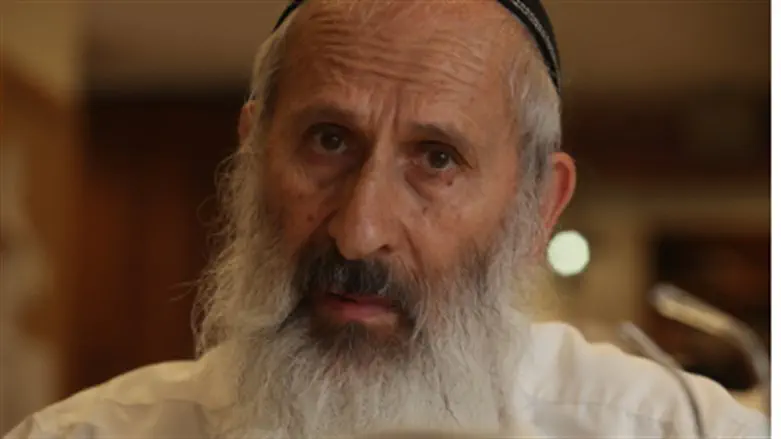
In the course of life there are stable situations and situations when people are exposed to difficulties, challenges, and the necessity for change. These occur both when a person is at home and when he is moving from one place to another. People’s lives progress from situations of permanence to encounters with the unexpected and the uncertain.
This movement from one stage to the next is an essential part of life. It is unavoidable. This being so, there is a need to prepare for the problems and dangers which can occur along the way.
This is true in the life of an individual and in the life of the Nation of Israel. Thus the “Book of BaMidbar” centers around the our Nation’s journey through the wilderness, from Mount Sinai to the Promised Land, from the exalted ideals we received upon the giving of the Torah toward the establishment of a national life of Torah in our own Jewish Homeland.
The moment we set out on the journey complications arose. The crises began with the “complainers.” Then the people wanted meat to eat instead of the miraculous manna. Even Miriam and Aharon have a crisis in regard to their brother, Moshe Rabenu. Then comes the Sin of the Spies, Korach’s rebellion, and the crisis when there is no water to drink. All of these are dilemmas within the Nation itself. In their wake come the conflicts with other nations, Edom, Sichon, Balak and Bilaam.
The journey is filled with crises and seeming setbacks.
However, these crises are our pathways to learning and to greater understanding about our identity and national goal. There are cases where people can’t learn things via well-presented explanations and lectures. Sometimes upheaval and life crises are needed. For example, the punishment we received for our complaints about the menu in the wilderness taught us the proper orientation to the material world. Miriam’s leprosy after speaking derogatorily about Moshe teaches her about the exalted level of her brother’s prophetic gifts.
Of course we don’t chase after crises in order to learn from them. We don’t have to exert ourselves unnaturally to bring problems upon us – they appear by themselves when needed. However, when they arrive we must be ready to catch the opportunity and raise ourselves to the new heights of existence which they offer. As the teaching goes: “A person does not achieve the wisdom of the Torah unless he fails in its understanding” (Gittin 43A).
A crisis is not the end of a matter. In the context of this discussion, a crisis provides the means to future elevation and growth. Without it the new level would not be obtainable. It is a process of breaking down and building up.
Let’s take the sin of the Golden Calf as an example. How horrible a setback! Nonetheless the Torah survives. The story doesn’t end in tragedy. The Nation continues. The Mishkan is erected. On the contrary, the connection between Hashem and Am Yisrael is strengthened in the wake of the crisis. The journey proceeds.
Thus it is important to differentiate between a crisis which leads to improvement and growth, as opposed to a process of decline and deterioration which leads to annihilation. For example, this is the difference between the cultural, political, and economic crises in the State of Israel, versus the deterioration of Judaism and Jewish life in the Diaspora due to the ever-increasing rise in assimilation. In Israel we have crises in the sense of temporary setbacks, but we are certain that the Nation of Israel which dwells in its own Land has the inner powers to overcome them and to rise toward our promised ideal in the coming years and generations.
In contrast, Diaspora Jewry is not undergoing a crisis – it is simply dying away. Diaspora Jewry, after the establishment of Medinat Yisrael, has no future. Diaspora Judaism does not have the power to insure the continuance of the Jewish People in foreign lands. The steadily increasing rate of intermarriage and physical and cultural liquidation which plague the Jews of the Diaspora is a process which is impossible to prevent. It is possible to delay the final decay and to temporarily strengthen a community here and there, but the general course of decline cannot be reversed.
Contrastinglyת in Israel, we experience crises of the living and dynamic body of Am Yisrael but they are like road signs on the way to continuing self-discovery and growth. The Diaspora doesn’t suffer these kinds of crises of positive development. Rather, Diaspora Jewry is suffering from an ever-degenerating ailment the end of which is death.
Once a visitor from America met Rabbi Kook in Jerusalem and complained about the problems he encountered in Eretz Yisrael. “And there are no problems in America?” Rabbi Kook replied. “The difference is that Diaspora Jewry is undergoing the spasms of death while the Jews of the Land of Israel are experiencing the spasms of birth.”
In Israel, the remedy for the problems we face is to inject more and more spirit into the physical body of the Nation, the government, the army, the educational and judicial systems, and all of the adjoining components of our national and family lives. The yearned for salvation will not come from some new political coalition or improved economic plan. While these are also important they are not the main thing. In addition to the physical building of the State of Israel, the great spirit and light of the Nation must be concurrently multiplied by our rising above a myopic understanding of Torah to embrace the horizons of Torat Eretz Yisrael, the Torah of National Unity and Redemption in our Land.